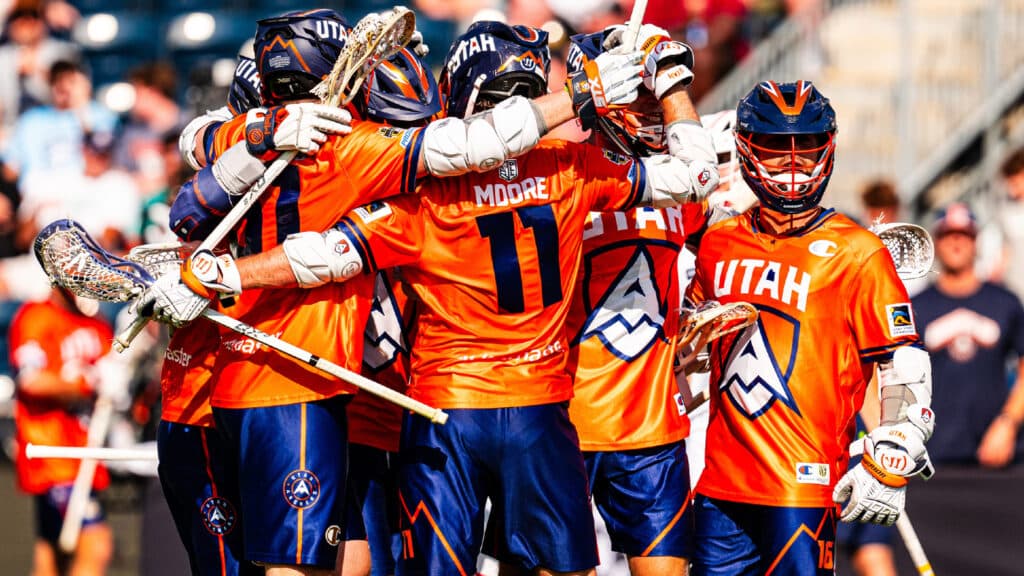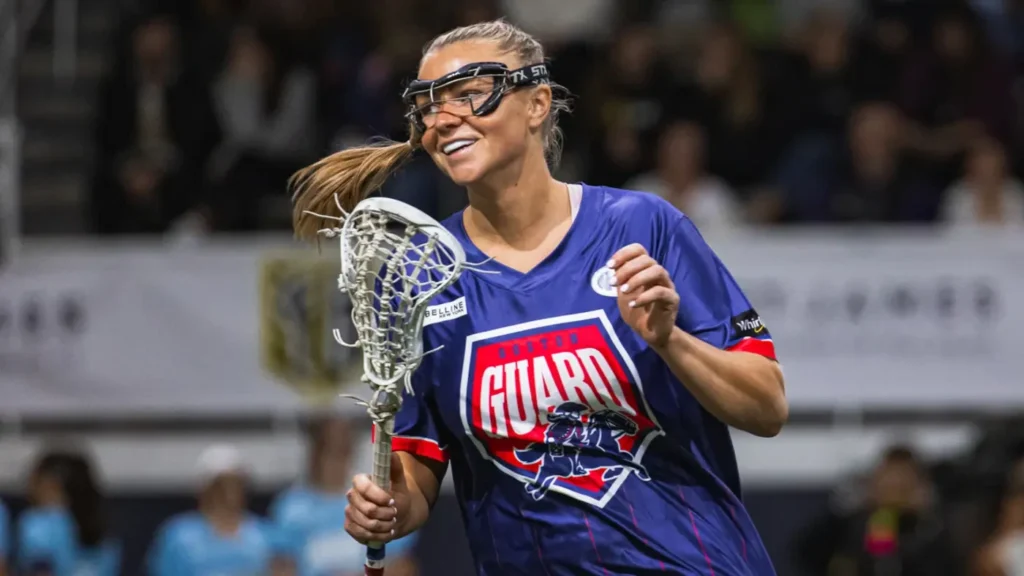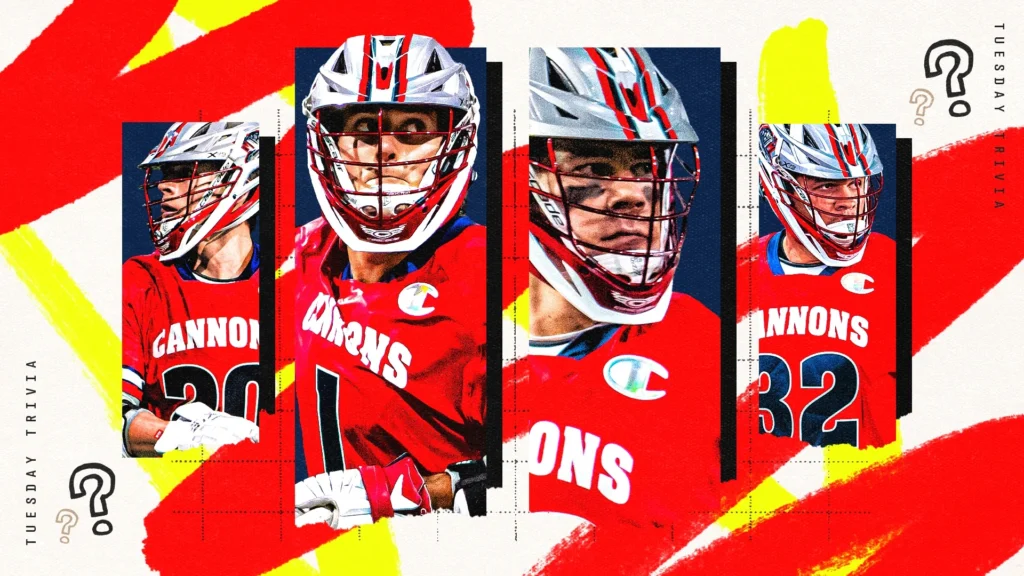
Why Tom Schreiber’s injury didn’t derail champion Archers’ offense
By Zach Carey | Sep 20, 2024
Tom Schreiber’s season-ending injury in Salt Lake City probably should’ve marked the end of the Utah Archers’ chances to repeat.
But the Archers rallied, beating the California Redwoods and Denver Outlaws at home to win the Western Conference before manhandling the Carolina Chaos in the semifinals and beating the Maryland Whipsnakes 12-8 in the Cash App Championship.
While Utah’s defense was spectacular down the stretch, the Archers’ offense relied on its other stars such as Grant Ament and Matt Moore, but also on offensive principles and some unique strategies to generate advantages in the nuances of the game.
Launching rockets out of the box
If you spend enough time watching the Archers’ midfielders, you’ll notice a common trend when they step onto the field: They sprint to the ball or to the crease “like lunatics,” per assistant coach Brian Kavanagh.
What at first appears to be a display of hustle and energy is actually a well-thought-out strategy to create offense early in possessions. By having each Utah midfielder run out of the box like a chicken with its head cut off, the Archers put defenses on the back foot, forcing them to match up haphazardly and react to what Utah is doing.
“It just puts pressure on a defense and puts them in a little bit of a panic situation all over the place off ball and on ball,” Kavanagh said. “We get an advantage knowing what we’re going to do and they have to be reactive.”
The Archers call the first midfielder out of the box a “rocket” who’s meant to draw the defense's attention, attract help defenders and be a threat as a cutter. When Schreiber is that guy, he often catches the ball going downhill, looking to get a step on his defender. When it’s Ryan Ambler or Dyson Williams, they prioritize drawing eyeballs and creating that panic as cutters.
“There’s no disadvantage,” Kavanagh adds. “It’s such a controllable thing.”
In last Sunday’s Cash App Championship, the Archers scored a goal directly off Ambler bolting his way to the center of the Whipsnakes defense. In the process, he drew Maryland long-stick midfielder Colin Squires and generated a short-stick matchup for Ament, which the first-team All-Pro midfielder attacked immediately.
When Ament has a shorty, it’s practically inevitable that he’s going to score. After beating Jake Bernhardt and drawing a hasty slide from Ajax Zappitello, he stuck the ball past Brendan Krebs in an awesome display of team offense.
Ambler is the standard-bearer of impacting offense without the ball in his stick. He’s the ultimate glue guy who is a schematic mastermind and an all-out hustler who creates opportunities for his teammates because of his heads-up play. The example he sets mixed with the tactical acumen that he, Schreiber, Kavanagh and head coach Chris Bates have developed makes offense a lot easier.
Substitution game trickery
For years, Kavanagh has been at the forefront of pioneering the substitution game as a method of creating offense. The emphasis on sprinting out of the box is an obvious example. But the trickery Utah has begun to employ over the past two years is a whole other beast.
“With 10 yards being cut out of the middle [of the field], the two-point line and the box being 20 yards, there’s some serious opportunities here to get creative,” he said. “The skill level of the players lends itself to – it’s almost videogame-ish – if this is theoretically possible, I’m sure these guys can execute it.”
In the process of trying to push the boundaries of what is possible, Kavanagh has brought Bates into the fold as a proponent of experimentation via substitution.
“He’s just seen that if you’re not trying to break the game, if you’re not pushing the game to its limits of how the rules are written and how the dimensions are set up, you’re leaving something on the table,” Kavanagh added.
In the Archers’ two games in the Cash App Playoffs, they did just that.
Versus the Carolina Chaos in the semifinals, Utah ran a fake ball flip between Ambler and Ament. What originally looked like a hidden ball trick turned into something completely different when Ambler – after taking two fake cradles to pretend he was doing a hidden ball trick – proceeded to sub out and allow Mason Woodward to come streaming down the middle of the field from the defensive half.
The action created a step-down shot from Woodward from a very similar distance to where he nailed his two-bomb in the title game. It’s a play that the Archers call “Swing." It's been in their arsenal since the club’s inception but is taking on new life with Woodward posing an offensive threat as a close defender.
“His skill set definitely opened up a lot more of those opportunities for us,” Kavanagh said
In the Cash App Championship, Utah ran what was essentially the inverse of “Swing” – instead named “Swing-44” for the Archers' No. 44, Tre Leclaire.
Ambler was, again, the offensive player to trigger the play. But instead of subbing out, he carried upfield opposite the box side and threw a high-arcing pass to the box before stepping over midfield. Utah already had Warren Jeffrey – a close defender – sub out through the box, so that meant that as Ambler stepped over midfield, Leclaire was free to step on.
In the process, the Archers created an imbalance for the Whipsnakes defensively, generating a step-down two-pointer for Leclaire, one of the most dangerous shooters in the game.
While Kavanagh is typically the forward-thinker brainstorming crazy plays, Bates was the one who drew this one up.
“I was almost proud of him,” Kavanagh said with a laugh. “‘You’re finally drinking the Kool-Aid I’ve been trying to get you to drink for five years,’” he told Bates.
While neither play resulted in a goal, they were both quality looks on cage that put the opposing defense under stress.
“There are only so many body blows you can absorb,” Bates said. “So I thought that gave us a little bit of a bump.”
Set plays galore
Speaking of giving the Archers a bump, the club’s set plays are some of the most difficult to defend in the league. Bates knows how to draw up sets that suit his personnel and he constantly puts defenses in a bind as a result.
At the end of the third quarter in Sunday’s title game, Utah led Maryland by two. During the quarter break, Bates instructed the Archers offense to run their “Zoom” play on the first possession of the fourth, ideally to get Leclaire another look at the cage.
Ambler ran a pass-down, pick-down with Mac O’Keefe on the lefty wing before O’Keefe swung the ball to Ament on the opposite side. Ament dished the ball to Moore on the righty wing, setting up like he was going to set a similar pick before flying by and clearing to X.
As he did, Leclaire bumped from the high crease over to the wing to set a perfectly placed pick on Zappitello. Consequently, Bernhardt and Zappitello miscommunicated and left Leclaire wide open 10 yards away from the cage.
The second-team All-Pro midfielder simply doesn’t miss opportunities like that.
“He has a ton of two-man background, so he really gets and thrives in those situations where there’s a little bit of miscommunication,” Bates said. “So he’s always looking to get his hands free.”
Set plays like that which generate high-quality looks are incredibly valuable for an offense and take pressure off its players.
For an offense that was without its best player in its final three games of the season, the Archers overcame his absence because of how deep their roster is and due to the next-level scheming they employ to dig up and utilize any potential advantage they can find.
Whether it be by trying to break the game and embracing the intricacies of the substitution, by drawing up straightforward but unstoppable set looks after timeouts, or by rethinking something as basic as how to run onto the field as a midfielder, the Archers embrace marginal gains and have won a pair of rings as a result.







